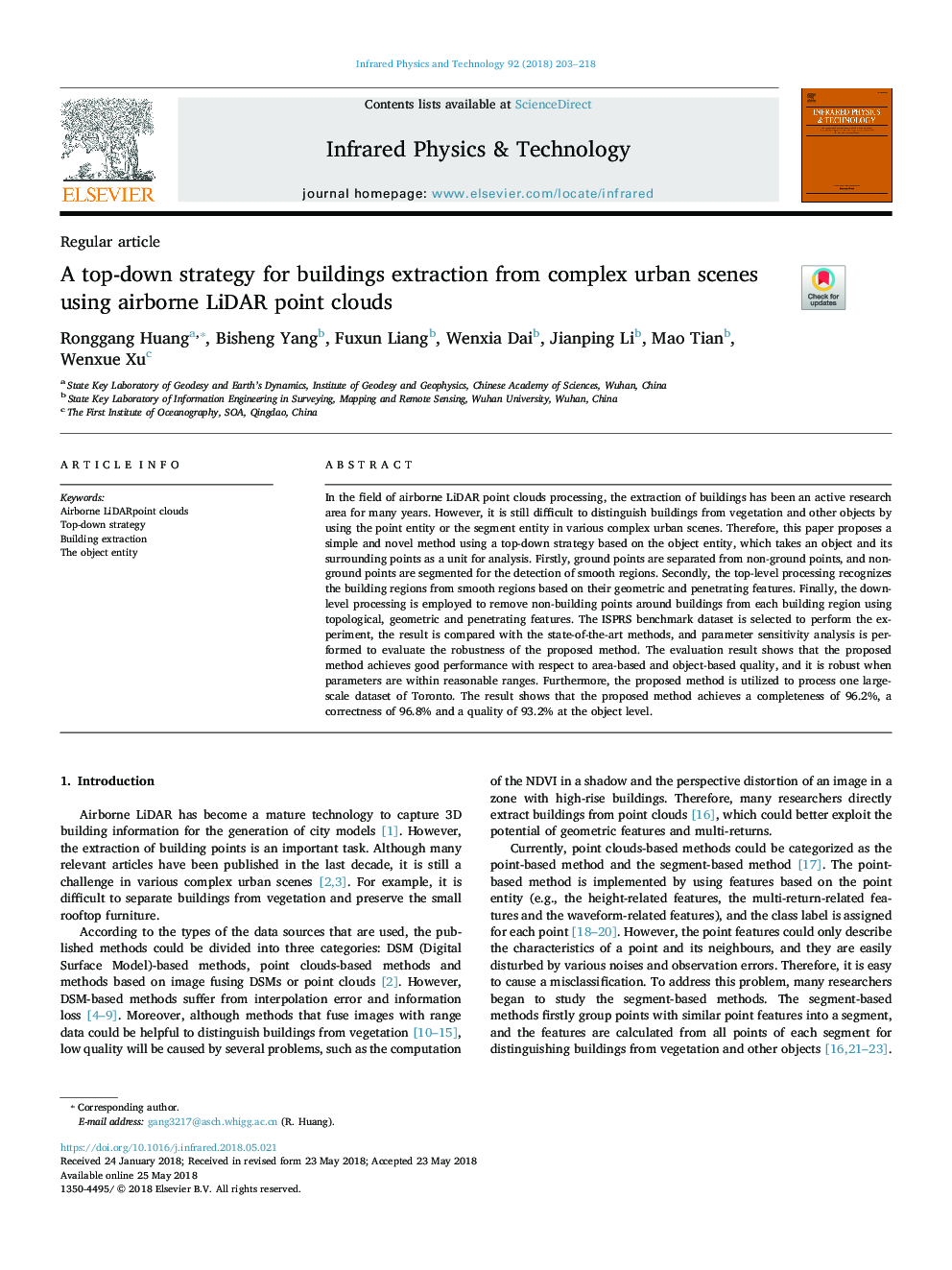| Article ID | Journal | Published Year | Pages | File Type |
|---|---|---|---|---|
| 8145666 | Infrared Physics & Technology | 2018 | 16 Pages |
Abstract
In the field of airborne LiDAR point clouds processing, the extraction of buildings has been an active research area for many years. However, it is still difficult to distinguish buildings from vegetation and other objects by using the point entity or the segment entity in various complex urban scenes. Therefore, this paper proposes a simple and novel method using a top-down strategy based on the object entity, which takes an object and its surrounding points as a unit for analysis. Firstly, ground points are separated from non-ground points, and non-ground points are segmented for the detection of smooth regions. Secondly, the top-level processing recognizes the building regions from smooth regions based on their geometric and penetrating features. Finally, the down-level processing is employed to remove non-building points around buildings from each building region using topological, geometric and penetrating features. The ISPRS benchmark dataset is selected to perform the experiment, the result is compared with the state-of-the-art methods, and parameter sensitivity analysis is performed to evaluate the robustness of the proposed method. The evaluation result shows that the proposed method achieves good performance with respect to area-based and object-based quality, and it is robust when parameters are within reasonable ranges. Furthermore, the proposed method is utilized to process one large-scale dataset of Toronto. The result shows that the proposed method achieves a completeness of 96.2%, a correctness of 96.8% and a quality of 93.2% at the object level.
Keywords
Related Topics
Physical Sciences and Engineering
Physics and Astronomy
Atomic and Molecular Physics, and Optics
Authors
Ronggang Huang, Bisheng Yang, Fuxun Liang, Wenxia Dai, Jianping Li, Mao Tian, Wenxue Xu,
